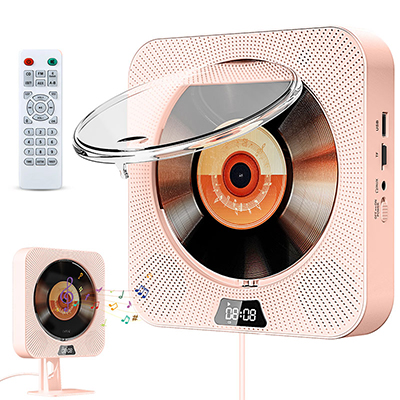Digital music platforms have become the mainstream audio carriers with their vast music libraries and convenient operations, while CD players seem to have deviated from the trend of the times. However, in the audio market landscape of 2025, this traditional playback device still holds irreplaceable technical value and application scenarios.

In terms of sound quality, the CD format, based on a 44.1kHz sampling rate and 16-bit quantization standard, has established a complete audio coding system, capable of achieving high-fidelity audio reproduction. CD players use dedicated decoding architectures and hardware-level signal isolation designs to avoid interference from multi-tasking environments on audio signals, ensuring the purity of physical-level sound quality. This professional decoding mechanism has significant advantages over general digital playback devices in parameters such as low-frequency response and dynamic range.
The physical attributes of music carriers endow CD players with unique cultural value. As a physical form of music presentation, CD albums, through their album binding design, graphic and textual content, and playback operation process, construct a complete sense of ritual for music consumption. Currently, the music industry has maintained the form of CD album release, forming a stable physical music consumption market, which provides content support for the survival of CD players.
The iteration of technology has driven the functional upgrade of CD players. Modern models generally integrate Bluetooth transmission modules and digital audio output interfaces, supporting wireless audio transmission and connection to external professional audio equipment. At the same time, by being compatible with different audio protocols, CD players can achieve functional interaction with modern audio systems and play a core role as a playback device in home audio networks.
However, CD players have inherent limitations. Their music libraries rely on purchasing physical CDs, and the efficiency and cost of obtaining music resources are higher than those of streaming platforms. The device prices cover a wide range from entry-level to professional models. High-quality models usually come with relatively high economic investments. In terms of portability, even products with miniaturized designs are still less flexible in mobile scenarios compared to mobile devices.
Whether to purchase a CD player should be based on an individual's music consumption habits and usage needs. For users who pursue the ultimate audio experience, value physical music collections, or need to build a professional audio system, CD players still have significant practical value. Consumers who prefer convenient access to music and prioritize multi-functional integrated devices are more suitable for choosing digital music solutions.
